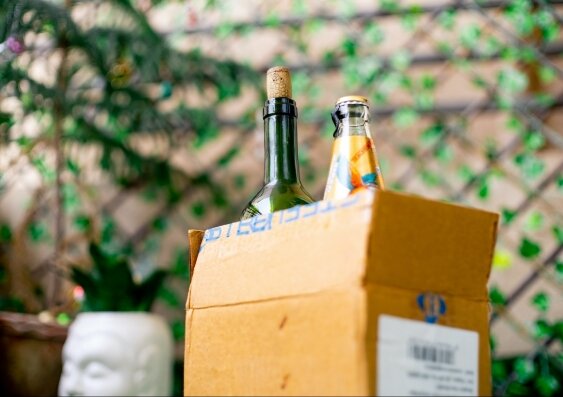More nuance in liquor licensing can serve public health

A new toolkit that provides data on alcohol-related harm and licensed premises helps new liquor license applications be considered within their local health context, a UNSW alcohol policy researcher says.
NSW Health commissioned Dr. Claire Wilkinson from the Social Policy Research Centre at UNSW Arts, Design & Architecture to evaluate a toolkit that connects local health district practitioners with information on alcohol-related violence, hospitalizations and existing licensed venues and their trading hours.
“[Alcohol] is a harmful commodity, but it’s one that’s very much embedded in our lives. So, thinking about how we can make it available in ways that don’t promote excessive consumption [is important],” Dr. Wilkinson says.
The program, piloted in four local health districts, explores conditions that can be placed on licensees to help reduce alcohol-related harm.
Dr. Wilkinson says that facilitating easy access to these statistics and promoting the use of conditions helped practitioners make evidence-based decisions with a focus on health.
“The [evaluation] findings supported nuance [in assessing new applications]. There was this sense that for it be an effective public health intervention [it] needed to decline applications. However, placing a range of conditions on liquor licenses also supports public health outcomes.”
Preventing alcohol-related harm
Dr. Wilkinson is an NHMRC Senior Research Fellow at the Drug Policy Modeling Program. Her research focuses on public health and alcohol policy, drawing on current policy as well as historical perspectives. The Drug Policy Modeling Program contributes valuable drug policy insights and interventions to better inform government responses to drug-related problems, such as alcohol-related harm.
While local health district practitioners are limited in what they can do to prevent alcohol-related harm—for example, they cannot change the labels on beverages, increase the price, or regulate bulk buying—the way alcohol is made available plays an important role, she says.
“There is a correlation between late opening hours and [the consumption of] products with a higher alcohol content, such as spirits, and alcohol-related harm,” she says.
Placing limits on trading hours and the types of alcohol sold can positively impact public health while still supporting local businesses, she says.
Through interviews with local health district practitioners, her research identified barriers, challenges and future potential for using the licensing tool.
“The research played an important role in ensuring the toolkit was evidence-based and useful to local health district liquor license responses,” says John Haydock from NSW Health. “It makes an important contribution to the prevention and minimization of alcohol-related harms in local communities.”
The toolkit has now been rolled out to all local health districts.
Navigating online alcohol sales
The toolkit’s introduction supports a positive change in practice around bricks and mortar sales. However, Dr. Wilkinson says that the rapid growth in online alcohol sales during the pandemic has introduced new challenges.
Additionally, lockdowns reduced our access to other avenues of stress relief, such as socialization and structured exercise in sports, group fitness and gyms.
Dr. Wilkinson and Ms. Stephanie Colbert, a Ph.D. candidate from UNSW Medicine & Health, are conducting research into the effect of the growing alcohol home delivery market.
“Regulation of online alcohol sales needs to be lifted to meet the same standards as bricks and mortar shops. It doesn’t make sense to have a two-tiered regulatory system, with some alcohol sales regulated less strictly than others,” Ms. Colbert says.
Online sales, for example, do not currently have to comply with regulations around the responsible service of alcohol, age verification and restrictions on late-night takeaway alcohol.
This kind of “light” regulation increases the risk of alcohol-related harm, particularly for young people, with some Australian retailers found to be delivering to playgrounds and schools, Dr. Wilkinson says.
“This is concerning given the well-established harms associated with alcohol consumption by underage youth, including an increased risk of damage to the developing brain and developing an alcohol use disorder in adulthood,” says Dr. Wilkinson.
Perhaps surprisingly, for most people, lockdown did not increase their alcohol consumption throughout 2020, she says. A third of people reported a decrease in their alcohol consumption during the pandemic, and another third felt their consumption remained unchanged in a UNSW Drug Modeling Policy Program study.
“It is a missed opportunity if we don’t look at what was going on for those people who decreased their consumption to help guide alcohol policy and practice,” she says.
Pursuing stronger alcohol policy
Dr. Wilkinson is also mapping international alcohol policy responses to the pandemic in consultation with researchers from the U.K., Canada, Chile, and Italy.
“This is a unique, real opportunity to share information about what’s going on in different areas of the world,” she says.
“We’re asking, are there sweet spots, or win-wins, where some of the restrictions implemented during COVID could be retained [for ongoing public health benefits] … [We’re asking how we can support] a night-time economy but perhaps having one that’s less associated with alcohol-related harm.”
In Australia, for example, local restaurants and cafes were permitted to sell takeaway alcohol—a change that proved very popular. “People enjoyed being able to show their support for local businesses,” she says.
Going forward, governments may consider retaining this with some additional restrictions, such as requiring this to include purchasing food to promote harm reduction, she says.
She says that contributing expert opinions through communities of practice gives state and territory governments greater context and invaluable insight as they consider tightening regulations around online alcohol availability.
Source: Read Full Article
